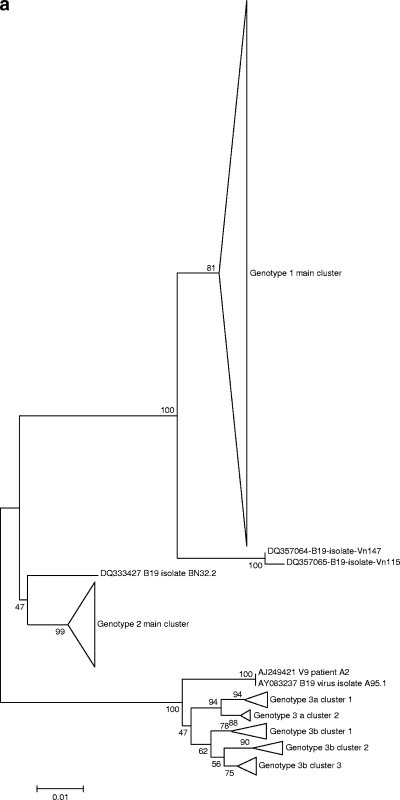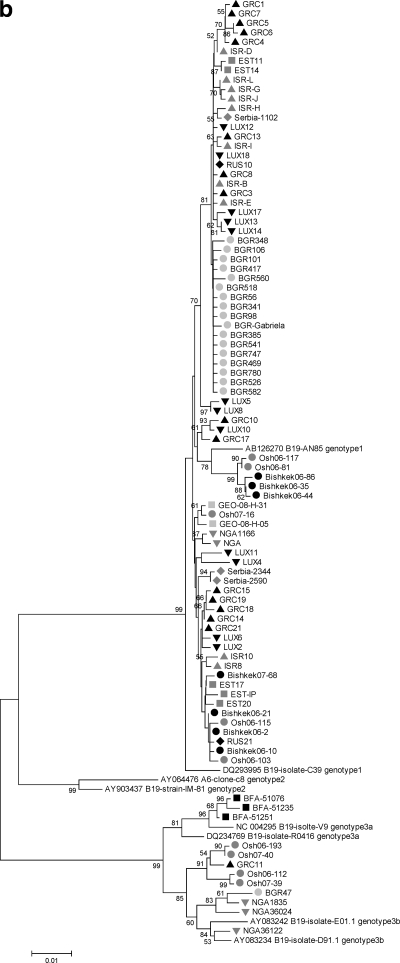FIG. 1.
(a) Phylogenetic tree based on 319 sequences (166 obtained in this study and 153 downloaded from GenBank). The basis of each isosceles triangle is proportional to the number of sequences. (b) Phylogenetic tree based on 92 nonredundant sequences from this study and a set of sequences downloaded from GenBank used as references for the different genotypes. The reference sequences are shown without symbols and are labeled with their GenBank accession number, name, and genotype designation. Phylogenetic analyses are based on a region of 994 nt and the neighbor-joining algorithm using the Kimura two-parameter model. Sequences are from 12 different locations in 11 countries: Bishkek, Kyrgyzstan (black circles); Osh, Kyrgyzstan (dark gray circles); Bulgaria (light gray circles); Burkina Faso (black squares); Estonia (dark gray squares); Georgia (light gray squares); Greece (black triangles); Israel (dark gray triangles); Luxembourg (inverted black triangles); Nigeria (inverted dark gray triangles); the Russian Federation (black diamonds); and Serbia (dark gray diamonds).


